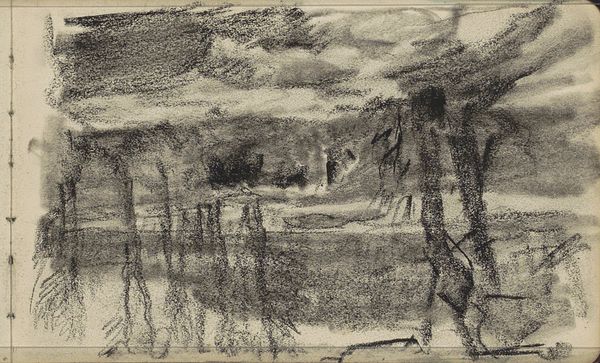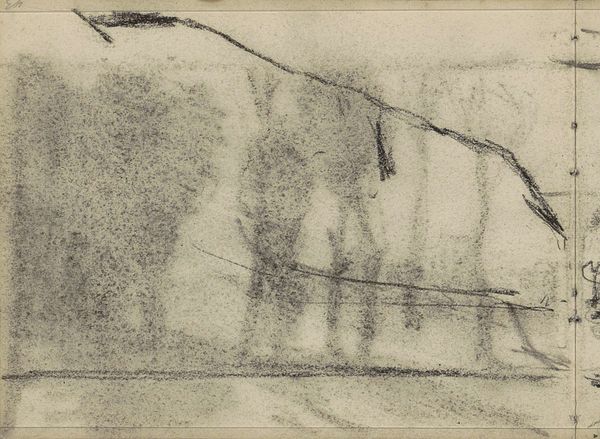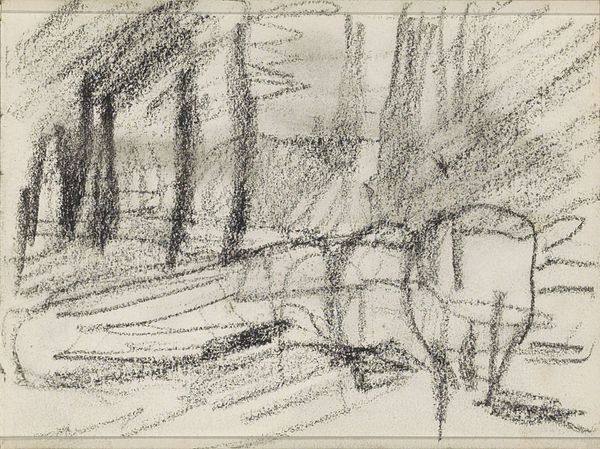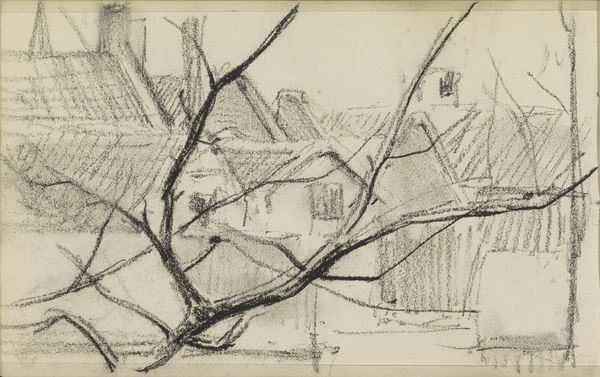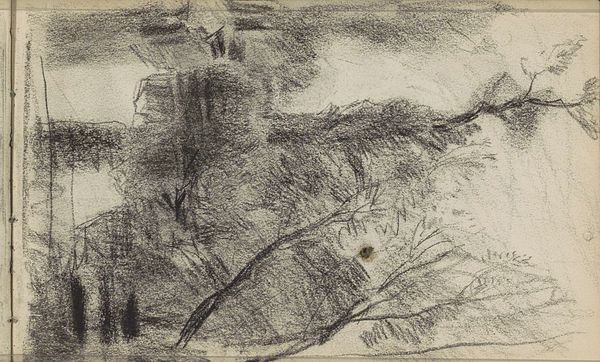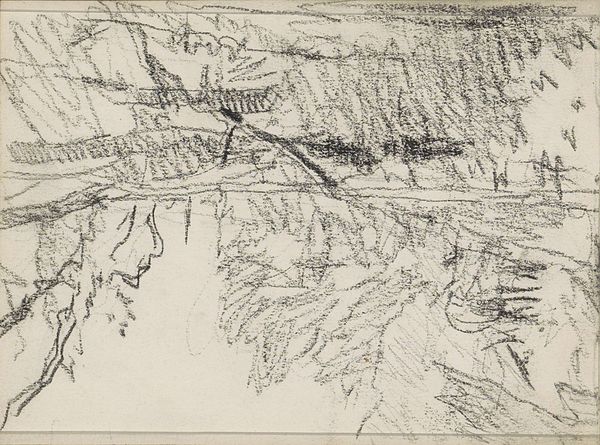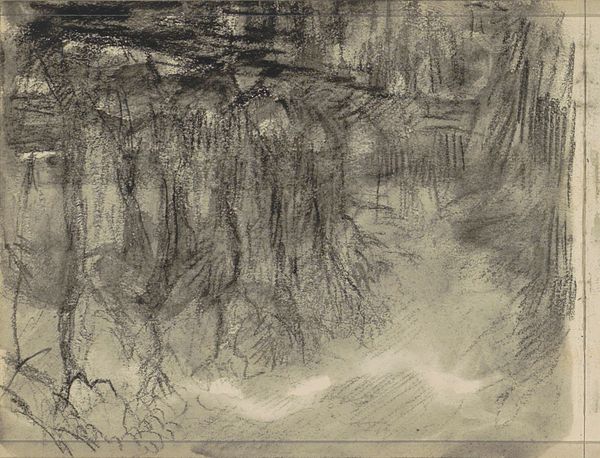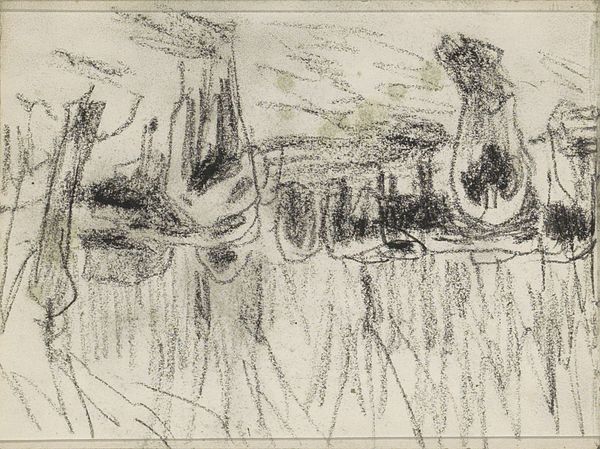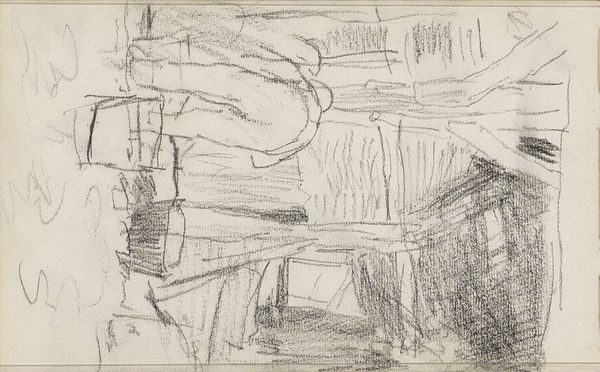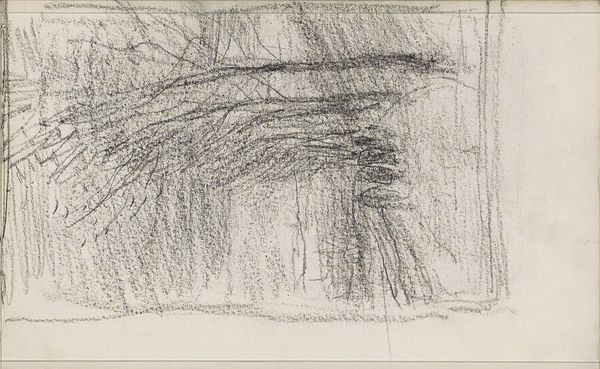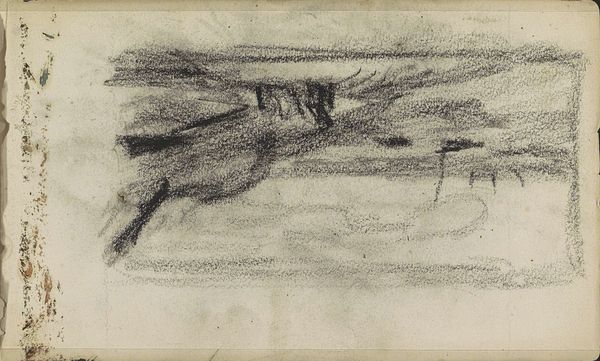
drawing, paper, charcoal
#
drawing
#
landscape
#
paper
#
charcoal
Copyright: Rijks Museum: Open Domain
Curator: This evocative piece is "Trees on a Hill," or "Bomen op een heuvel," by Hermannus Adrianus van Oosterzee, created in 1893. It’s a charcoal drawing on paper. Editor: It feels quite somber, almost claustrophobic. The heavy charcoal gives it a starkness, as though something is being concealed by those densely rendered trees. Curator: It’s interesting you say that, given the social and political climate of the time. The late 19th century saw the rise of industrialization and urbanization. We could read these trees as symbols of nature, potentially under threat and certainly being transformed, overshadowed by new powers. Editor: I immediately read the dense charcoal work as symbolic of shadows—a long visual trope throughout history, often alluding to mortality. The placement of the trees feels intentional; they're crowded, looming, almost forming a barrier. It reminds me of forests as portrayed in folklore; as barriers between worlds and test sites. Curator: I appreciate that link to folklore and the psychological weight you assign to these visual markers. Van Oosterzee lived through a period of rapid change, grappling with modernity much like the Impressionists or early Symbolists did. His social standing might’ve been affected by such transformations, shaping his view on this world around him. Editor: I think that feeling of being on the precipice certainly comes through. Charcoal as a medium itself lends itself to such ambiguity—a fleetingness and immediacy unlike other drawing methods. Curator: This piece can perhaps be viewed as a form of social commentary. It captures a world where older power structures – represented by nature, or these trees– are juxtaposed, potentially diminished or darkened by contemporary social changes and forces. Editor: Yes, and maybe those dense dark areas also function as a kind of portal, a traditional symbolic function. Overall, it reads like the edge of something. It leaves us waiting. Curator: It certainly provides space for contemplation on the societal changes during his era, through such stark visual imagery and emotional resonance. Editor: I agree. A powerful landscape, both artistically and symbolically.
Comments
No comments
Be the first to comment and join the conversation on the ultimate creative platform.
